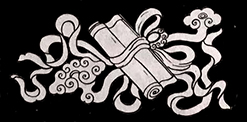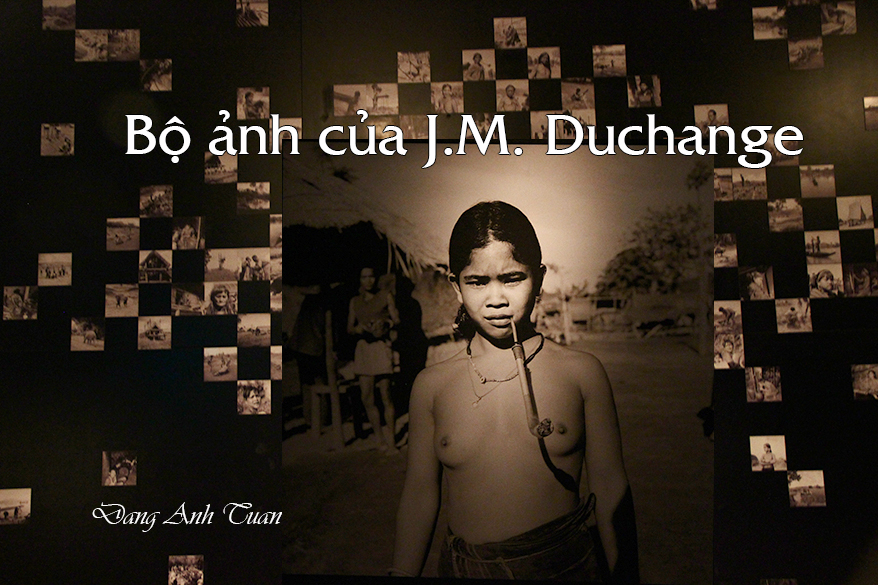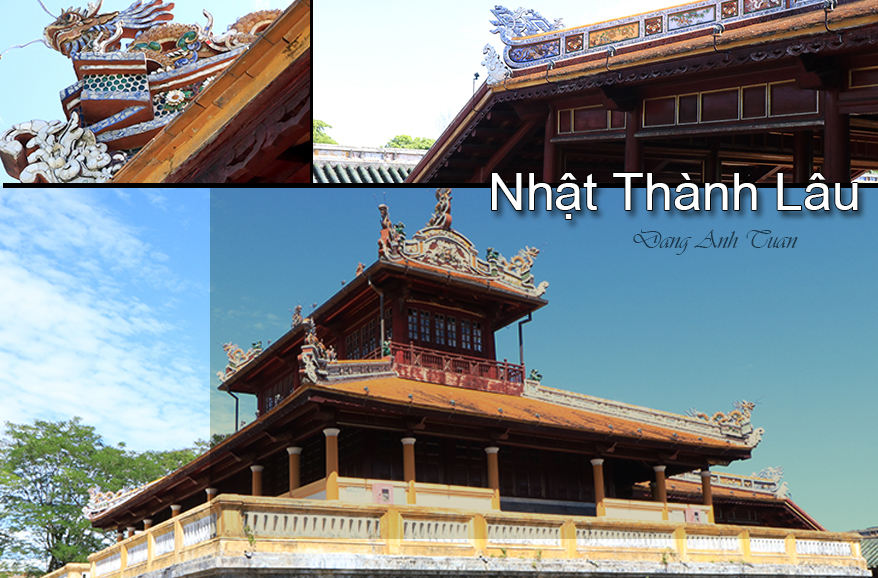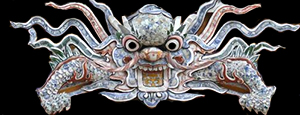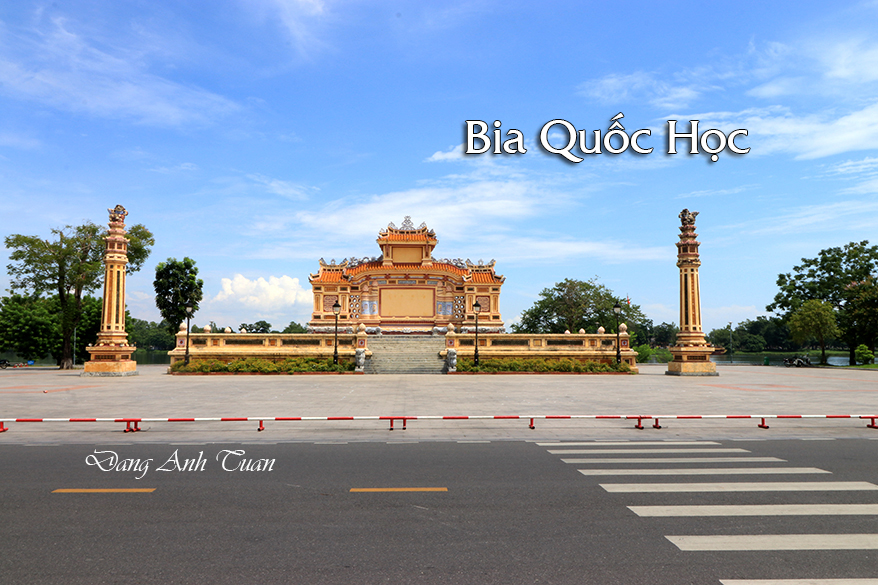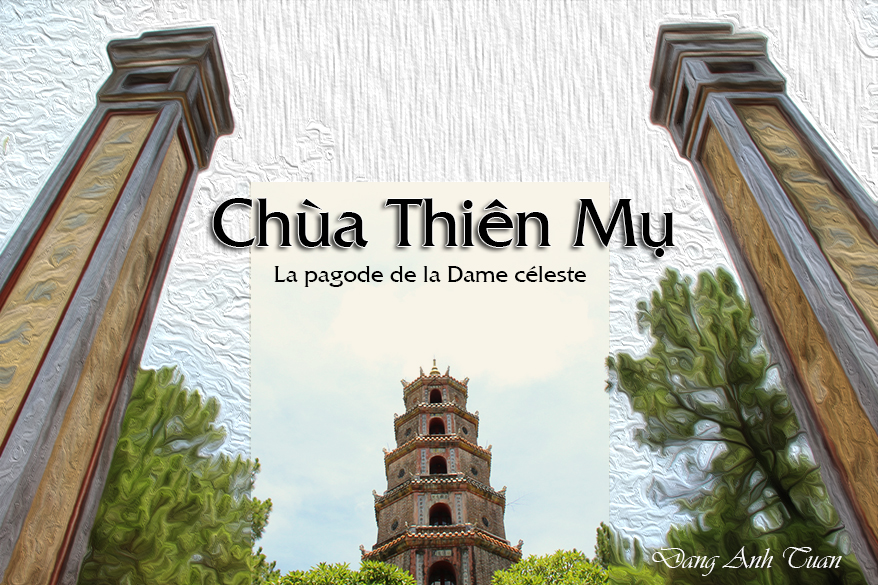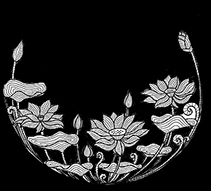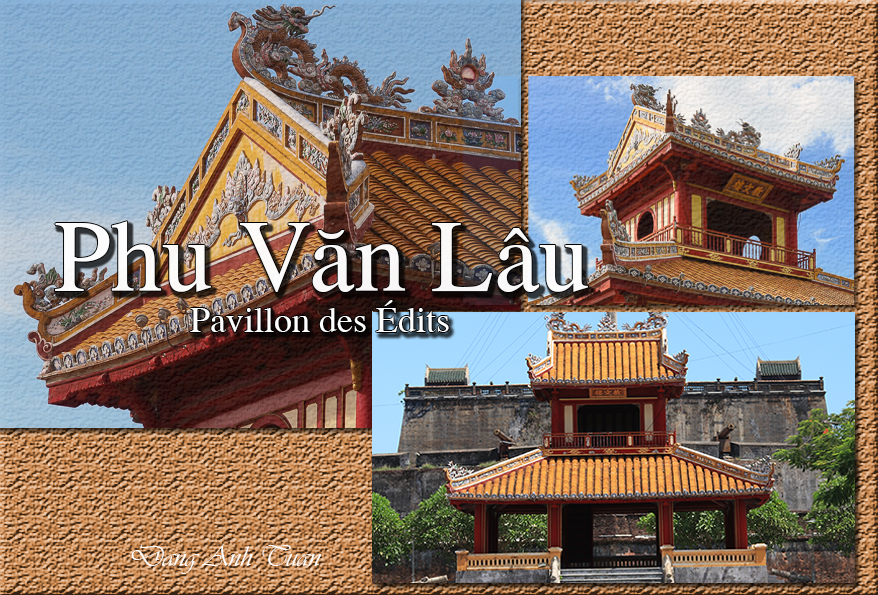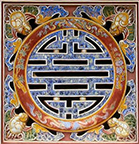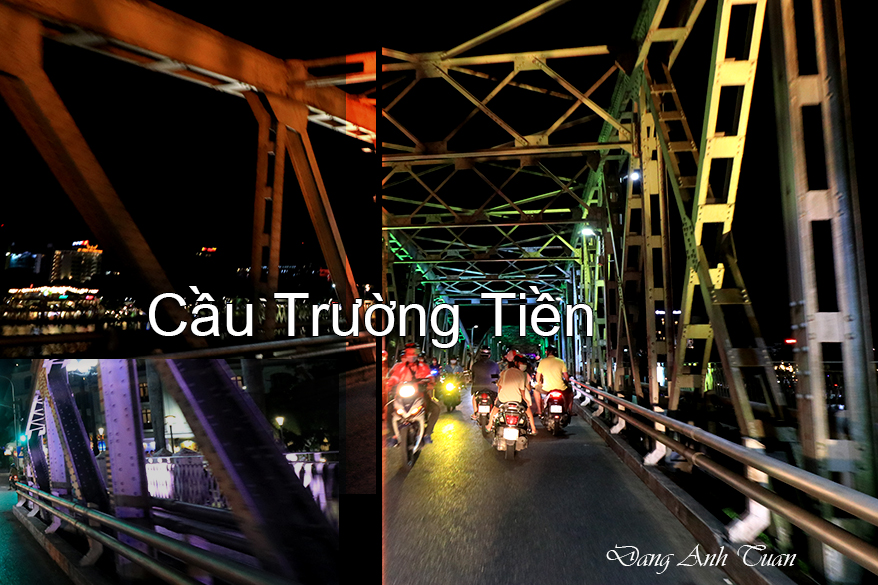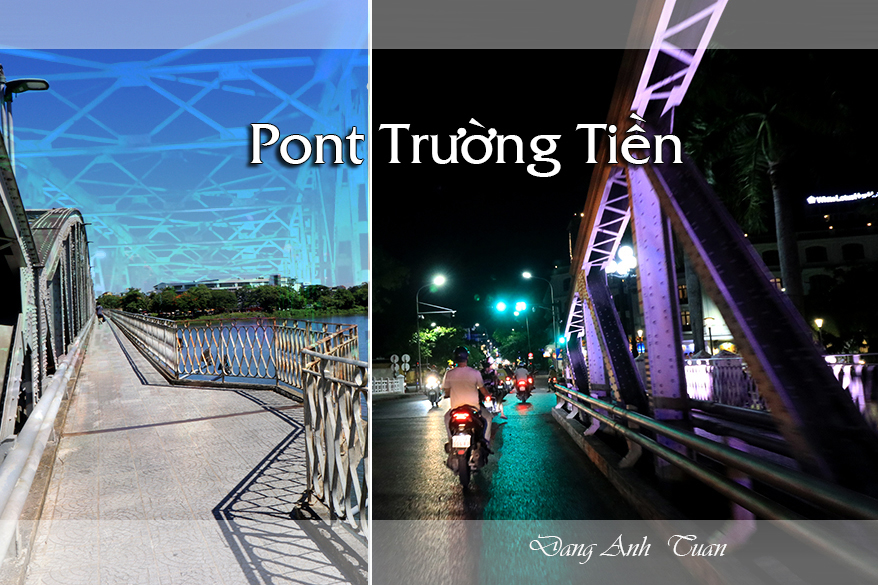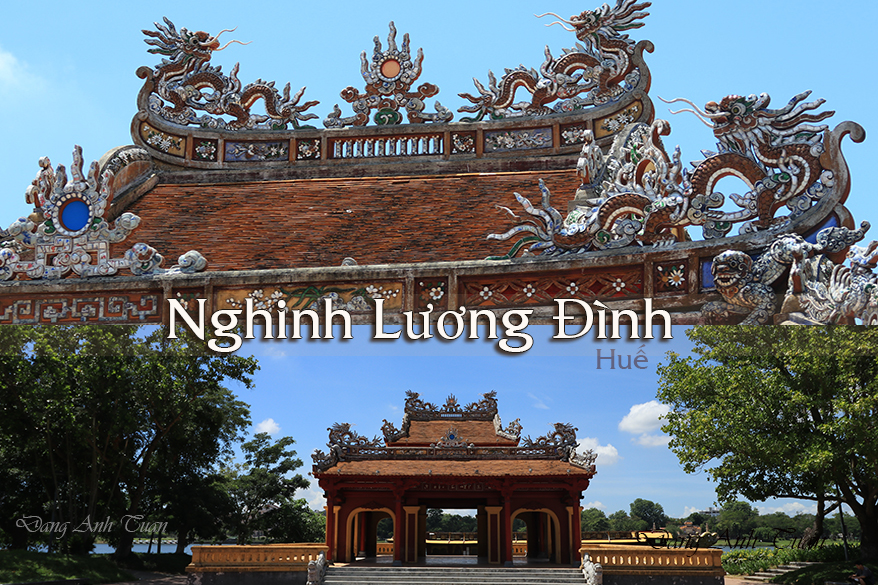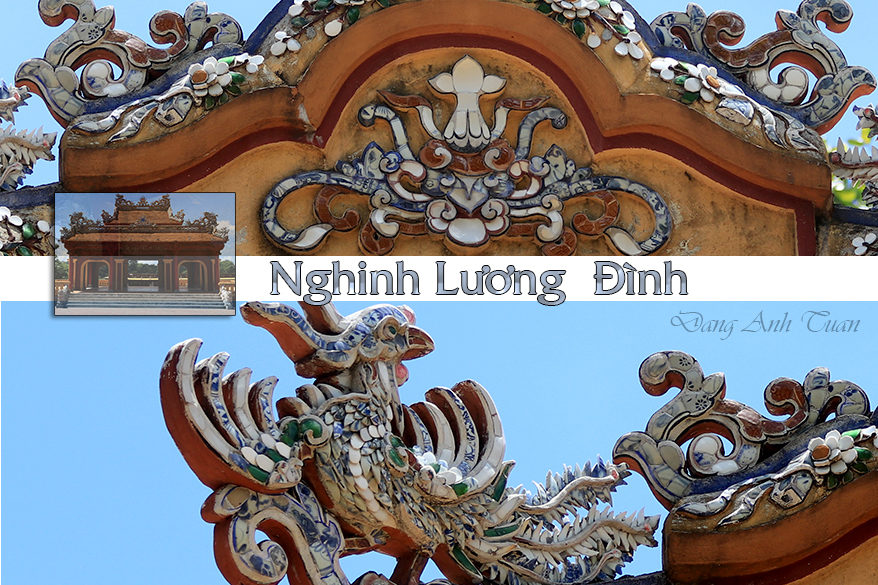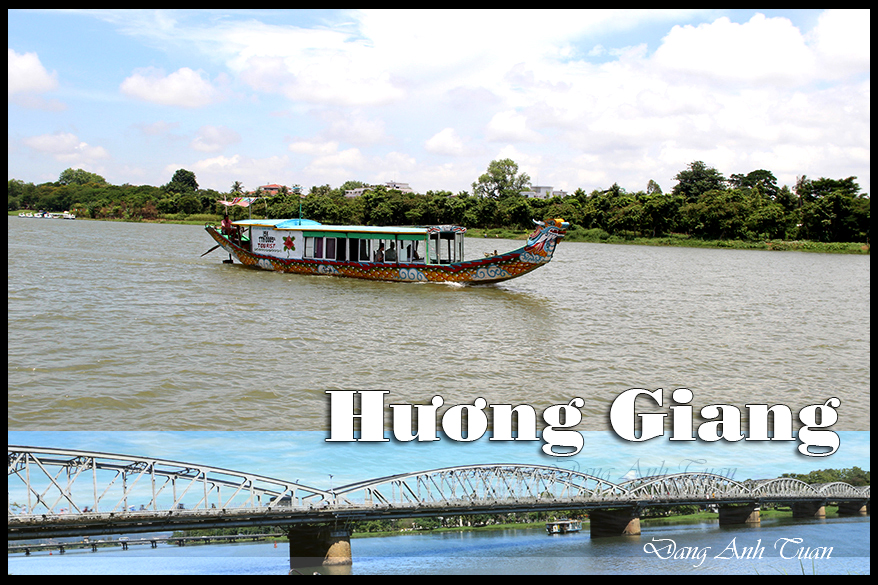
Sông Hương
Version française
Version anglaise
Galerie des photos
Được phát nguyên từ hai nguồn tả và hữu trạch nguyên ở miền thượng lưu của dãy núi Trường Sơn, sông Hương chảy qua kinh thành Huế rồi đến cửa Thuận An trước khi ra biển Đông. Nước sông thường trong với màu xanh ngọc và im phăng phất như mặt hồ ở trong một môi trường thiên nhiên cây cỏ hoa lá khiến tạo ra một vẻ đẹp yên tỉnh và mơ mộng nhất là dọc theo ven sông có một số công trình kiến trúc hài hoà độc đáo như chùa Thiên Mụ, Văn Thánh, điện Hòn Chén và các lăng của các vua triều Nguyễn. Khi còn thuộc vương quốc Chămpa, sông nầy mang tên chi không ai biết cả cho đén ngày nay. Chỉ biết trong « Ô Châu Cận Lục » của Dương văn An ấn hành vào 1555 dưới triều nhà Mạc và « Phủ biên tạp lục » của Lê Quí Đôn vào khoảng năm 1776 thì sông nầy được gọi là Linh Giang. Không biết bao giờ nó lại mang tên sông Huơng. Sở dĩ nó được cư dân gọi với tên sông Hương vì nó có mùi thơm đặc biệt tỏa ra từ thân rễ Thạch xương bổ, một loại thực vật mọc ven hai bờ sông.
Sông nầy được vua Thiệu Trị ca tụng về sau trong bài thơ « Hương Giang hiểu phiếm » trong một cuộc dạo thuyền lúc ban mai. Còn người đời gọi sông Hương là « cô gái duyên dáng của miền Trung » hay là nàng thơ của xứ Huế trong một bài viết « Cầu Trường Tiền sáu vài mười hai nhịp … » của nhà nghiên cứu Trần Đức Anh Sơn trong tạp chí 3/5/2021 Heritage (*). Du thuyền trên sông Hương vào một đêm trăng thanh là một cuộc du ngoạn vô cùng thích thú nhất là nếu có dịp được nghe tiếng hò thanh tao của các cô lái đò Huế. Không biết bao giờ sông Hương đã trở thành một nguồn cảm hứng vô tận cho những ai có nổi niềm tâm sự đến đây như Nguyễn Du, tác giả của kiệt tác « Kim vân Kiều« chỉ cần thấy mảnh trăng ở trên sông Hương để gợi lại một mối sầu muôn thưở mà cũng muốn nói lên cái thân phận ở chốn quan trường chỉ biết khom lưng vâng dạ ở chế độ phong kiến.
Hương giang nhất phiến nguyệt
Kim cổ hứa đa sầu.
Đào Tấn, một nhà soạn tuồng nổi tiếng Việt Nam dưới thời vua Tự Đức cũng có lần nhắc đến sông Hương qua áng thơ văn bằng chữ Hán:
Cộng ẩm Hương Giang thủy
Vô nhân thức thủy hương
Cùng uống nước sông Hương,
Không có người cảm được mùi thơm của nước.
Còn sĩ phu Cao Bá Quát phấn khởi với hào khí của mình thì nhìn sông Hương như một thanh kiếm dựng đứng giữa trời xanh bao la:
Trường giang như kiếm lập thanh thiên.
Nhà thơ Thu Bồn cũng đã để lại gần đây những câu thơ bất hủ về sông Hương:
Con sông dùng dằng, con sông không chảy,
Sông chảy vào lòng nên Huế rất sâu.
Phải người Huế đi đâu cũng vẫn lưu luyến chốn quê nhà cũng nhớ đến sông Hương như người Nam với dòng sông Cửu Long muôn thưở:
Anh đã từng vô Nam ra Bắc
Thấy nhiều nơi cảnh sắc cũng xinh
Đi mô cũng nhớ quê mình
Nhớ Hương Giang gió mát, nhớ Ngự Bình trăng thanh.
(*) Tạp chí của VietnamAirLines 3/5/2021
Version française
En provenance de deux sources situées à gauche et à droite dans les hautes régions de la chaîne de montagnes Trường Sơn, la rivière des parfums traverse la cité impériale de Huế puis l’estuaire de Thuận An avant d’entrer dans la mer de l’Est. Son eau est en général limpide, de couleur turquoise et elle est aussi calme comme celle du lac dans un environnement naturel de plantes et de fleurs, ce qui lui confère ainsi une beauté tranquille et rêveuse, en particulier tout le long de la rivière avec un grand nombre d’œuvres architecturales harmonieuses et originales telles que la pagode de la Dame Céleste, le temple du Confucius, le temple du bol de jade (Hòn Chén) en l’honneur de la déesse Thien Y A Na (Mère divine) et les mausolées des rois de la dynastie des Nguyễn. Au temps où elle appartint encore au royaume du Champa, cette rivière dut avoir un nom que personne ne connait pas jusqu’à aujourd’hui.
Selon la monographie intitulée «Ô Châu cận lục» de Dương Văn An publiée en 1555 sous la dynastie des Mạc et l’ouvrage « Phủ biên tạp lục » de l’érudit Lê Quí Đôn vers 1776, cette rivière prit le nom Linh Giang. On ne connait pas exactement l’époque à laquelle elle a été nommée « la Rivière des Parfums ». La raison pour laquelle les gens du lieu l’appellent ainsi est due au fait qu’elle a un arôme particulier émanant du rhizome Thạch xương bồ (Acorus gramineus), une plante qui pousse le long des rives de la rivière. Celle-ci a été évoquée ensuite par le roi Thiệu Trị dans son poème intitulé « Hương Giang hiểu phiếm » lors d’une promenade en bateau le matin.
Pour les gens du coin, elle est appelée « la charmante fille de la région du Centre » ou la muse de Huế dans un l’article intitulé « Le pont Trường Tiền a six butées et douze travées … » du chercheur Trần Đức Anh Sơn dans la magazine Heritage (*)
Une promenade en bateau sur la rivière des Parfums par une nuit au clair de lune est une excursion extrêmement agréable, surtout si on a l’occasion d’entendre le chant éthéré des batelières de Huế. On ne sait pas quand la Rivière des Parfums est devenue une source d’inspiration inépuisable pour ceux qui ont les confidences à révéler en venant ici comme Nguyễn Du, l’auteur du chef-d’œuvre « Kim Vân Kiều« : il suffit de voir un morceau de la lune sur la Rivière des Parfums pour lui rappeler la tristesse sempiternelle et évoquer l’époque féodale où le mandarin n’avait qu’à obéir aux ordres en courbant sa tête.
Hương giang nhất phiến nguyệt
Kim cổ hứa đa sầu.
Đào Tấn, un compositeur d’opéra vietnamien très connu sous le règne du roi Tự Đức, a eu l’occasion de mentionner un jour la Rivière des Parfums à travers son poème écrit en caractères chinois:
Cộng ẩm Hương Giang thủy
Vô nhân thức thủy hương.
On boit ensemble l’eau de la rivière des parfums
Aucun ne réussit à déceler le parfum de l’eau.
Quant au lettré Cao Bá Quát, enthousiasmé par sa grandeur d’âme, il considère la Rivière des Parfums comme une épée dressée sous un immense ciel bleu.
Le poète Thu Bồn a laissé récemment des vers immortels sur la Rivière des Parfums:
Con sông dùng dằng, con sông không chảy,
Sông chảy vào lòng nên Huế rất sâu.
La rivière hésite, la rivière ne coule pas,
La rivière coule dans le cœur des gens de Huế qui l’affectionnent tellement.
Même les gens de Huế, où qu’ils aillent, sont toujours attachés à leur terre natale et se souviennent aussi de la rivière des Parfums comme les gens du Sud avec l’éternel Mékong:
Anh đã từng vô Nam ra Bắc
Thấy nhiều nơi cảnh sắc cũng xinh
Đi mô cũng nhớ quê mình
Nhớ Hương Giang gió mát, nhớ Ngự Bình trăng thanh.
Vous avez eu l’occasion d’aller au Sud et de venir au Nord
Partout vous avez découvert un magnifique paysage
Peu importe le lieu, il vous manque aussi la terre natale,
la rivière des parfums au vent frais et la montagne Ngự Bình au clair de lune.
English version
Originating from two sources located on the left and right in the high regions of the Trường Sơn mountain range, the Perfume River flows through the imperial city of Huế, then the estuary of Thuận An before entering the East Sea. Its water is generally clear, turquoise in color, and as calm as a lake in a natural environment of plants and flowers, which gives it a peaceful and dreamy beauty, especially along the river with a large number of harmonious and original architectural works such as the Pagoda of the Celestial Lady, the Confucius Temple, the Jade Bowl Temple (Hòn Chén) in honor of the goddess Thien Y A Na (Divine Mother), and the mausoleums of the kings of the Nguyễn dynasty. When it still belonged to the kingdom of Champa, this river must have had a name that no one knows to this day.
According to the monograph entitled « Ô Châu cận lục » by Dương Văn An published in 1555 under the Mạc dynasty and the work « Phủ biên tạp lục » by the scholar Lê Quí Đôn around 1776, this river was named Linh Giang. The exact time when it was named « the Perfume River » is not known. The reason why the locals call it so is due to the particular aroma emanating from the rhizome Thạch xương bồ (Acorus gramineus), a plant that grows along the riverbanks. This was later mentioned by King Thiệu Trị in his poem entitled « Hương Giang hiểu phiếm » during a morning boat ride.
For the locals, it is called « the charming daughter of the Central region » or the muse of Huế in an article entitled « The Trường Tiền bridge with six piers and twelve spans… » by researcher Trần Đức Anh Sơn in Heritage magazine (*).A boat ride on the Perfume River on a moonlit night is an extremely pleasant excursion, especially if one has the chance to hear the ethereal singing of the boatwomen of Huế. It is unknown when the Perfume River became an inexhaustible source of inspiration for those who have confidences to reveal when coming here, like Nguyễn Du, the author of the masterpiece « Kim Vân Kiều« : it is enough to see a piece of the moon on the Perfume River to remind him of everlasting sadness and evoke the feudal era when the mandarin had only to obey orders by bowing his head.
Hương giang nhất phiến nguyệt
Kim cổ hứa đa sầu.
Đào Tấn, a very famous Vietnamese opera composer during the reign of King Tự Đức, once had the opportunity to mention the Perfume River through his poem written in Chinese characters:
Cộng ẩm Hương Giang thủy
Vô nhân thức thủy hương.
We drink together the water of the Perfume River
None can detect the fragrance of the water.
As for the scholar Cao Bá Quát, inspired by its grandeur of soul, he considers the Perfume River as a sword raised under a vast blue sky.
The poet Thu Bồn recently left immortal verses about the Perfume River:
Con sông dùng dằng, con sông không chảy,
Sông chảy vào lòng nên Huế rất sâu.
The river hesitates, the river does not flow,
The river flows in the hearts of the people of Huế who love it so much.
Even the people of Huế, wherever they go, are always attached to their homeland and also remember the Perfume River like the people of the South with the eternal Mekong:
Anh đã từng vô Nam ra Bắc
Thấy nhiều nơi cảnh sắc cũng xinh
Đi mô cũng nhớ quê mình
Nhớ Hương Giang gió mát, nhớ Ngự Bình trăng thanh.
You have had the chance to go South and come North
Everywhere you have discovered a beautiful landscape
No matter the place, you also miss your homeland,
the Perfume River with the cool breeze, the Ngự Bình mountain under the clear moonlight.
